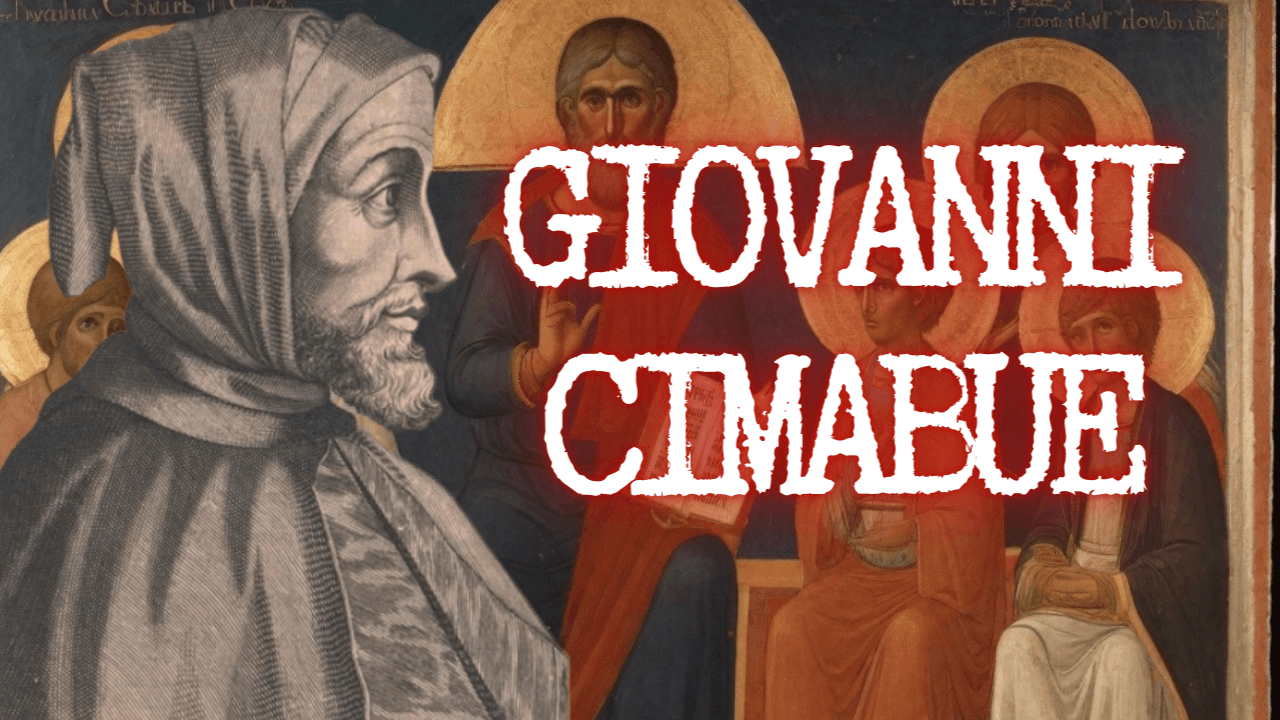Who was Giovanni Cimabue? Delve into the captivating world of Giovanni Cimabue, the renowned Italian painter, as we unveil his life’s story and explore his remarkable works that continue to inspire generations of art enthusiasts. Discover the enduring legacy of this artistic genius.

Giovanni Cimabue; (c. 1240-1302), Italian painter, who was the first great master of the Florentine school. He has been regarded traditionally as the teacher of Giotto, but beyond this his career was very shadowy until modem scholars succeeded in isolating a small nucleus of authentic works from a varied collection of more or less plausible attributions.
The enormous superiority of Cimabue over his Florentine predecessors, such as Coppo di Marcovaldo and the Master of Vico l’Abbate, seems to be due largely to his determination to come to grips with the various painting trends that were dominant in his time. During a stay in Rome in 1272, he studied the powerful classical style that had developed under the leadership of Pietro Cavallini. Cimabue’s work also shows that he was familiar with the aristocratic Byzantine style of Constantinople and with the more expressive and emotional manner cultivated by provincial Byzantine masters. Cimabue could have seen both of these Byzantine styles in Italy in imported art objects and in the works of itinerant craftsmen. Despite these influences, however, Cimabue remained mindful of his own Tuscan tradition, with its strong compositional clarity and its emphasis on human dignity.
Works:
Cimabue’s most famous work is the great altarpiece of the Madonna and Child Enthroned with Angels and Prophets (Uffizi Gallery, Florence), probably painted in the early 1280’s, for the Church of Santa Trinita, Florence. The figures are disposed in and around a quasi-architectural setting of a stepped throne. Although it is a fully mature work, the altarpiece pays homage to Byzantine tradition in the abstract pattern of the gold striation on the garments of the two chief figures. Belonging to about the same period is the extensive cycle of frescoes in the Church of San Francesco at Assisi. Despite the poor condition of these frescoes, the artist’s remarkable skill in the building up of dramatic effects is clearly evident in the narrative scenes of the Crucifixion and the Life of the Virgin.
Among Cimabue’s other major works are two large painted crosses, notable for their powerful expressive stylization. The first of these is in the Church of San Domenico, Arezzo. The second is the magnificent cross in the Church of Santa Croce. (The cross was badly damaged by floods in 1966.) The last known work of Cimabue, executed about 1302, is the mosaic in the apse of the Cathedral of Pisa, of which only the upper half of the figure of St. John has survived unrestored.
Reputation:
In his own time Cimabue’s fame was very great, as we know from the contemporary reference to him in Dante’s Divine Comedy. However, his reputation was obscured in succeeding centuries by the conventional comparison of his work with that of Giotto, whose achievement in eliminating the lingering traces of the Byzantine manner was so much lauded by Giorgio Vasari. But as the earlier development of medieval painting came to be better understood, Cimabue’s achievement was reassessed, and he is now considered not merely a precursor but a fountainhead of the great age of Italian painting.